
Carl August Nielsen was a Danish composer, conductor and violinist, widely recognized as his country's most prominent composer.
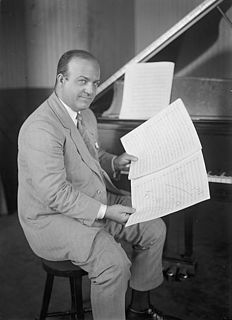
Ferdinand Rudolph von Grofé, known as Ferde Grofé was an American composer, arranger, pianist and instrumentalist. He is best known for his 1931 five-movement tone poem, Grand Canyon Suite, and for having orchestrated George Gershwin's Rhapsody in Blue prior to its 1924 premiere.
Robert Wilfred Levick Simpson was an English composer, as well as a long-serving BBC producer and broadcaster.

Max Bruch was a German Romantic composer, teacher, and conductor who wrote more than 200 works, including three violin concertos, the first of which has become a staple of the violin repertoire.

Sir Edward German was an English musician and composer of Welsh descent, best remembered for his extensive output of incidental music for the stage and as a successor to Arthur Sullivan in the field of English comic opera. Some of his light operas, especially Merrie England, are still performed.

Victor August Herbert was an American composer, cellist and conductor of English and Irish ancestry and German training. Although Herbert enjoyed important careers as a cello soloist and conductor, he is best known for composing many successful operettas that premiered on Broadway from the 1890s to World War I. He was also prominent among the Tin Pan Alley composers and was later a founder of the American Society of Composers, Authors, and Publishers (ASCAP). A prolific composer, Herbert produced two operas, a cantata, 43 operettas, incidental music to 10 plays, 31 compositions for orchestra, nine band compositions, nine cello compositions, five violin compositions with piano or orchestra, 22 piano compositions and numerous songs, choral compositions and orchestrations of works by other composers, among other music.

Ottorino Respighi was an Italian composer, violinist, teacher, and musicologist and one of the leading Italian composers of the early 20th century. His compositions range over operas, ballets, orchestral suites, choral songs, chamber music, and transcriptions of Italian compositions of the 16th–18th centuries, but his best known and most performed works are his three orchestral tone poems which brought him international fame: Fountains of Rome (1916), Pines of Rome (1924), and Roman Festivals (1928).
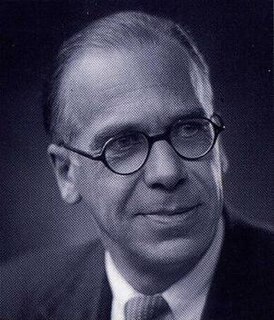
William Alwyn, was an English composer, conductor, and music teacher.
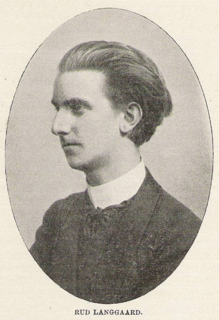
Rued Langgaard was a late-Romantic Danish composer and organist. His then-unconventional music was at odds with that of his Danish contemporaries but was recognized 16 years after his death.
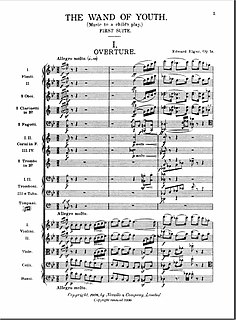
The Wand of Youth Suites No. 1 and No. 2 are works for full orchestra by the English composer Edward Elgar. The titles given them by Elgar were, in full: The Wand of Youth First Suite, Op. 1a (1869–1907) and The Wand of Youth Second Suite,.
Herman David Koppel, known in Denmark as Herman D. Koppel, was a composer and pianist of Jewish origin. Born in Copenhagen, he fled the Nazis with his family in 1943. He wrote 13 symphonies, numerous concertos, and 20 string quartets.
Anthony Vincent Benedictus Collins was a British composer and conductor. He scored around 30 films in the US and the UK between 1937 and 1954, and composed the British light music classic Vanity Fair in 1952. His Decca recordings of the seven Sibelius symphonies was only the second cycle by a single conductor and orchestra to appear.

Karl Henrik Ludolf Nielsen was a Danish composer, violinist, conductor, and pianist. Today he is considered one of the most important Danish composers of the early 1900s.

Carl Nielsen's Helios Overture, Opus 17, is a concert overture which was first performed by the Royal Danish Orchestra, conducted by Johan Svendsen, on 8 October 1903 in the large hall of the Odd Fellows Mansion in Copenhagen.

Christian Frederik Emil Horneman was a Danish composer, conductor, music publisher, and music instructor.

Carl Nielsen's Aladdin, Opus 34/FS 89, is incidental music written to accompany a new production of Adam Oehlenschläger’s "dramatic fairy tale" presented at The Royal Theatre in Copenhagen in February 1919.
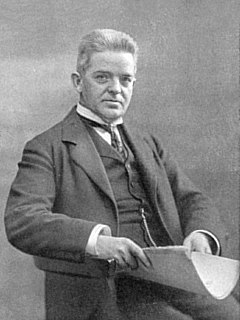
Carl Nielsen's Wind Quintet, or as indicated by the original score, the Kvintet for Flöte, Obo, Klarinet, Horn og Fagot, Op. 43, was composed early in 1922 in Gothenburg, Sweden, where it was first performed privately at the home of Herman and Lisa Mannheimer on 30 April 1922. The first public performance was on 9 October 1922 in the smaller hall at the Odd Fellows Mansion in Copenhagen. It is considered a staple of the repertoire for wind quintet.
Carl Nielsen's String Quartet No. 1 in G minor, Opus 13, was first performed privately on 18 December 1889 in Copenhagen. It was the first of Nielsen's four string quartets in the official series.
Carl Nielsen's String Quartet No. 2 in F minor or Quartet for Two Violins, Viola and Cello in F minor, Opus 5, was composed in 1890, partly in Denmark but mostly in Germany where the composer was travelling on a stipend. The second of Nielsen's four string quartets in the official series, it was first performed privately for Joseph Joachim on 18 November 1890 at the Hochschule für Ausübende Tonkunst in Berlin.

Carl Nielsen's At the Bier of a Young Artist for string orchestra, FS 58, was written for the funeral of the Danish painter Oluf Hartmann in January 1910.















